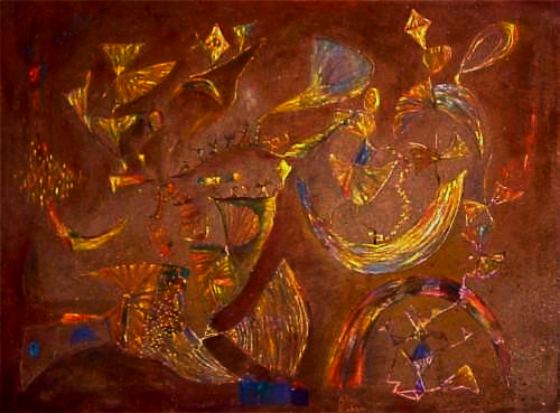Country India State Punjab | Language spoken Punjabi | |
 | ||
District Shaheed Bhagat Singh Nagar | ||
Map of Rahon
Rahon is a city and a municipal council in the Shaheed Bhagat Singh Nagar district of the Indian state of Punjab. |Religion : Mostly Sikhism
Contents
- Map of Rahon
- Satluj bridge rahon punjab 21 1 2012
- Geography
- Population
- Founding
- Medieval to present
- Demographics
- Places of interest
- References

Satluj bridge rahon punjab 21 1 2012
Geography

Rahon is located at 31.05°N 76.12°E / 31.05; 76.12. It has an average elevation of 250 metres (820 feet).Situated on the Jullundur City Jaijon Doaba line of the Northern Railway, Rahon is 7 km from Nawanshahr, the tahsil/subdivision headquarters, and 65 km from Jalandhar, the district headquarters. It is also connected by road with Nawashahr (8 km), Jadla (12 km), Ludhiana (51 km), and Phillaur (37 km), Machhiwara (18 km). Its population was 12,046 in 2001. It is a Class-III municipality.
Population
Rahon is the one of the oldest continuously inhabited cities in India. It was also among the 50 most populous cities in the world for many centuries, particularly in the period between 52 B.C.-1750 A.D.. After that period, Rahon started witnessing gradual decline due to epidemics, attacks from foreign invaders, and a reduction in merchant activity when the silk route began to bypass Rahon in favor of Kabul. Rahon had Asia's oldest mandi bazaar (now ruined) situated at the city's Delhi gate. The bazaar was famous for its variety and quality of products, including spices, weapons, apparel, and footwear. Rahon's population also declined due to outbreaks of malaria, the immigration of a large proportion of its Muslim population to Pakistan during partition, and civilian casualties resulting from attacks by outside invaders. Rahon has the oldest Government High School in the Punjab state, which was constructed in 1857
Founding
Rahon is said to have been founded in the first century B.C. by Raja Raghab, who called it Raghupur, by which name it continued to be called in correspondence by the Pandits of the city until the twentieth century. After its founding, the city came into the possession of Gujars, who were eventually driven out by the Mahton Rajputs, who in turn succumbed to the Ghorewaha Rajputs, whose conquest of the country is put down as having occurred in the time of Muhammad Ghori (d. 1206 AD).
The ruler Raja Rajpal renamed the town ‘Rahon’, reportedly as tribute to a lady named ‘Raho’. Some contemporaries had written that it was considered unlucky to speak of Rahon by its proper name, in the morning, when fasting. According to them, until breakfast Rahon should be referred to as ‘Zanana shahr’, or ‘Women town’. In the time of Ibrahim Lodhi (1517-1526 AD), the city was reported to have a population of 145,000 and was a flourishing trading center on the route to Tibet and Central Asia. Local shoemaking attained a high degree of skill and a pair prepared by one Mian Khaki Shah of Rahon is said to still be on exhibit in a museum at Lahore, Pakistan
Toward the beginning of the Mughal period, the town was occupied by the Ghorewaha Raja of Machhiwara, Rana Udho. He actively assisted Akbar (1556-1605 AD). During his fight for the Delhi throne, he defeated and captured the rebellion leader Bairam Khan. As a reward, the Raja allowed Rana to retain the jagir of Rahon. In Akbar’s time, Rahon was the capital of the Dardhak Mahal and gave its name to one of the two tarafs into which the mahal was divided. In Aurangzeb’s reign (1658-1707 AD) a brick fort was built here. The Rajputs of Rahon were Chaudhris and men of much influence during the period of Muhammadan rule. However, after the Raja of Rahon converted to Islam, he was beheaded and his territories seized by the Rana of Jadla.
Medieval to present
In 1710 AD, Rahon was conquered by Banda Singh Bahadur after defeating mughals in the Battle of Rahon (1710).Later, it fell back into the hands of the Mughals. In 1759 AD, Rahon was seized by Dhallewali Confederacy Sikhs led by Tara Singh Gheba, and remained in their possession until Tara Singh's death, when it was added to Maharaja Ranjit Singh’s dominions. However, Pandits continued to dominate local politics. Pandit Sardars ran the city's administration for centuries. After the collapse of the Sikh Empire, the descendants of the Rana of Rahon came to prominence again and the Rana of Rahon, Chaudhry Abdul Rehman Khan of Rahon was a member of the Legislative Assembly of Punjab from the Unionist Party before Indian Independence.
Until independence in 1947 the Rana of Rahon and the Rajrana of Jadla controlled most of the estates, while the Muslim Rana of Rahon fled to Pakistan, first moving to Sahiwal and later settling in Rehamnabad Khanqa Dogran. After Partition, Pandit Buta Ram Qasir Jagirdar continued to serve as Municipal Councilor and local leader of Rahon for next two and half decades. Pandit Butar Ram's father Sansar Chand was Zaildar of the region
Rahon is an old city and it overlooks the low valley of the Satluj, it held social, economic, and political significance during various periods of history. This significance stemmed primarily from the city's location along the ancient trade route to Tibet and Central Asia and it began to fade in importance as soon as a new route through Kabul was opened during Mughal times. Further, Rahon's proximity to marshes made it a victim of periodic large-scale outbreaks of malaria. Over time, the city's population declined greatly, falling to 69,000 when the British took over after the First Anglo Sikh War in 1846 and falling further to 6,607 by 1971. After the division of the country in 1947, the Muslim population of Rahon was uprooted to Pakistan, with most settling in Fasalabad and Rahwali. One of the famous land lord Family of Tuffail Tikka is settled in Chak# 68 JB, Jhang Road, Faisalabad. His son Khalid Tikka was elected in Elections. Tuffail Tikka Brother Sardar Muhammad Khan Tikka who was renowned police officer in India before partition is also settled here. His Son Shahid Ahmad Tikka is a Police officer and working as SSP Punjab Police and currently posted as DPO-Jehlum. Currently his Tuffail Tikka grand son Mansoor Tikka is Lumberdar (Village Headman) of Chak # 68 JB.
Demographics
In the 2001 Indian census, Rahon had a population of 12,046. Males constitute 52% of the population and females 48%. Rahon had an average literacy rate of 81%, higher than the national average of 65.38%: male literacy was 88%, and female literacy was 75%. 11% of the population was under 6 years of age.
Places of interest
Sati Mata Bhagwan Devi Mandir
The "Sati Mata Bhagwan Devi Mandir" is situated at Mattewara road in Rahon. It was founded by late Shree Hari Krishan Jagota. Every year Jagota community from all over the world visit on "Jathere Pujan Utsav" on first Sunday in the month of April.
The "Gogna Jathere Sati Mata Mandir" is situated in the heart of Rahon. It was founded by late Shree Hazari Lal Gogna. Every year, "Jathere Pujan Utsav" is celebrated by the Gognas in the month of March/April.
There is also the Panch Tirthian tank which was excavated by Rana Udho as a place of pilgrimage for his five sons who could not proceed on pilgrimage due to their father's illness. There is another tank, called Ramsar, adjoining the samadhs of Tara Singh Gheba and his widow which was constructed by their son Jhanda Singh. There is also an old serai (sraaye), said to have been built in the reign of Shah Jahan (1627-1658 AD). Another holy place in the town is Suraj Kund which is said to have been built by one Bawa Aughar during the period of Pathan rule. There is also a tomb, built during the rule of the Tughluq dynasty, which is said to contain the ashes of a saint.There is a famous piligrimate of 'Baba Ram Ratan ji'. It is called the 'Chaten Samadh'
